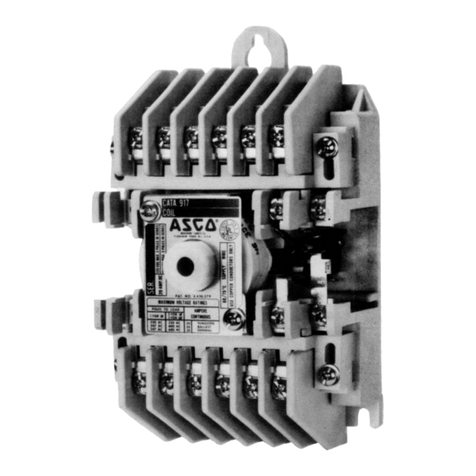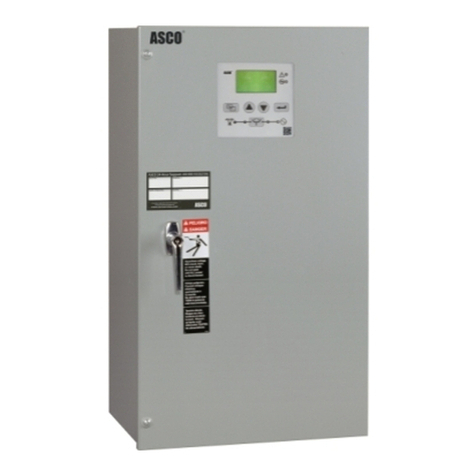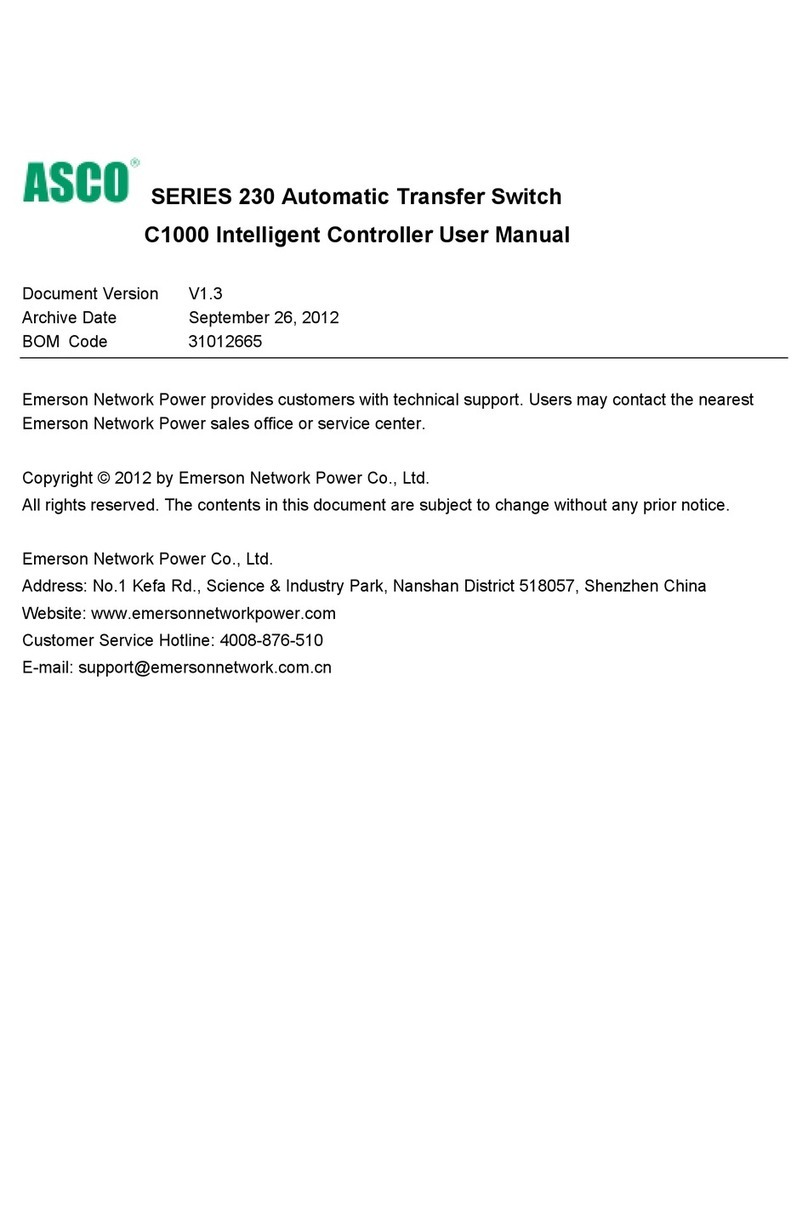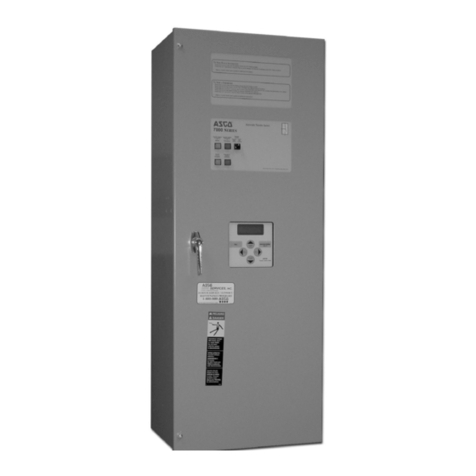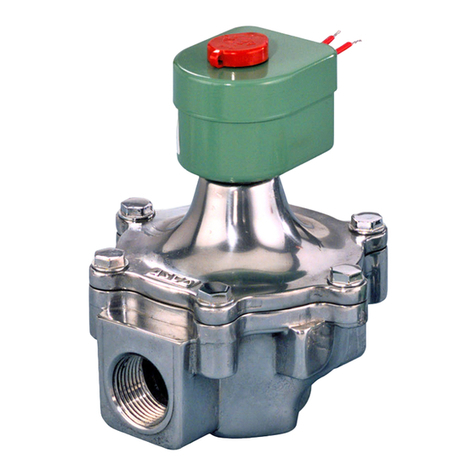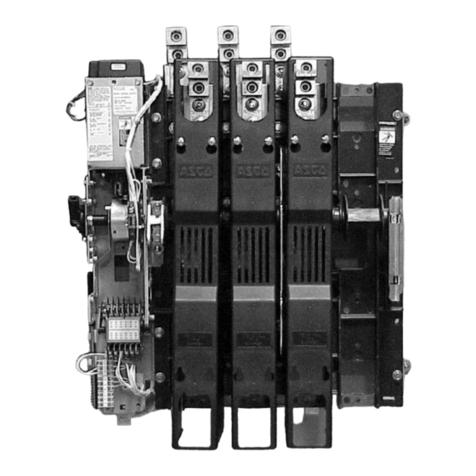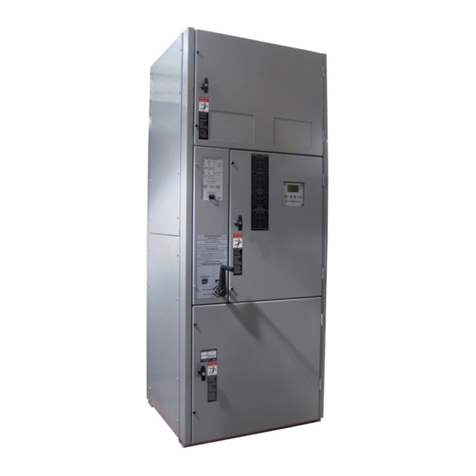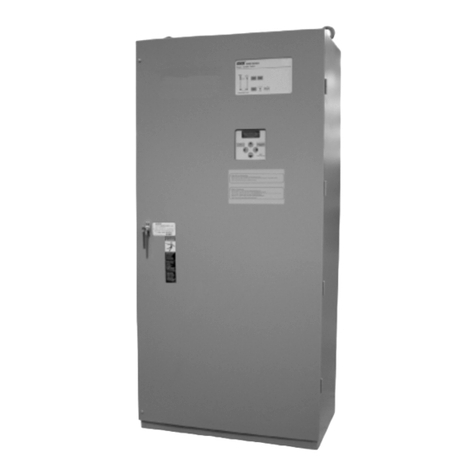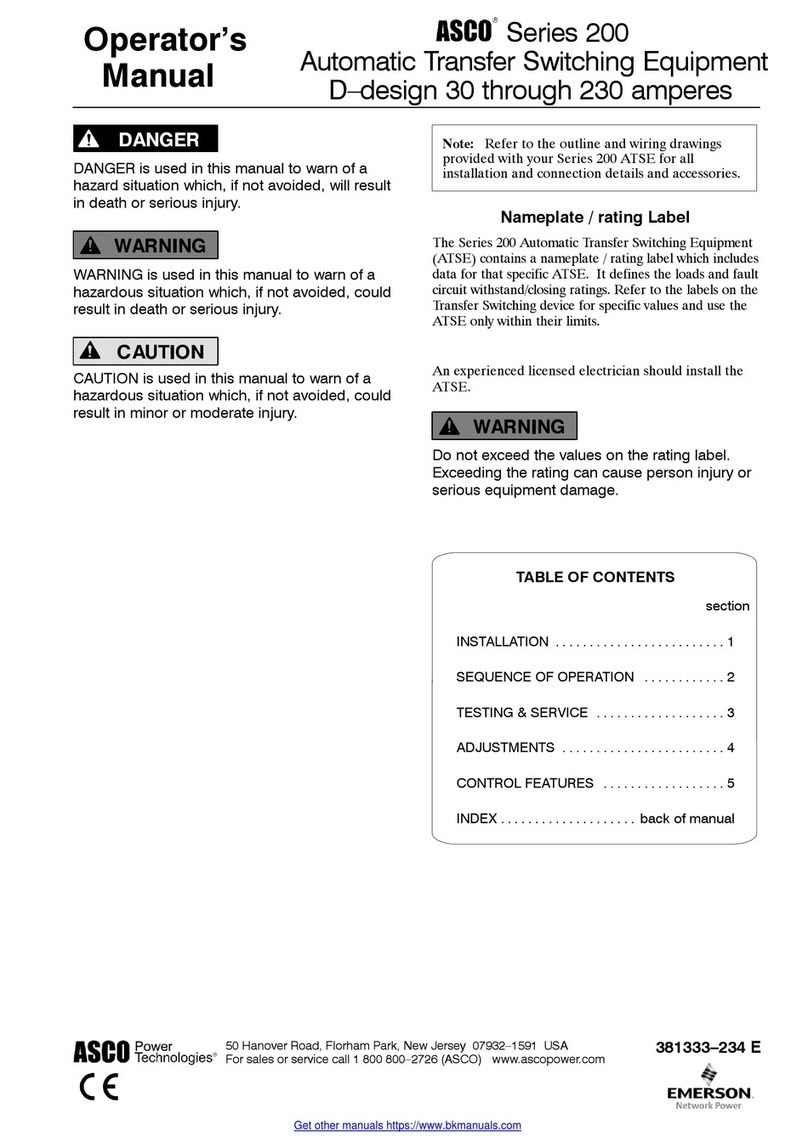
Installation Installation Manual
381333-415 B 5
De–energize the conductors before making any
line or auxiliary circuitry connections. Be sure
that Normal and Emergency line connections are
in proper phase rotation. Place engine generator
starting control in the OFF position. Make sure
engine generator is not in operation.
Testing Power Conductors
Do not connect the power conductors to the ATB
until they are tested. Installing power cables in
conduit, cable troughs, and ceiling-suspended
hangers often requires considerable force. The
pulling of cables can damage insulation and
stretch or break the conductor’s strands. For this
reason, after the cables are pulled into position,
and before they are connected they should be
tested to verify that they are not defective or
have been damaged during installation.
Protect the switch from construction grit and
metal chips to prevent malfunction or shortened
life of the ATB switch.
Connecting Power Conductors
A Wiring Diagram is furnished with the ATB. All
wiring must be made in accordance with the local
codes. After the power cables have been tested,
connect them to the appropriate terminal lugs on the
Bypass Switch as shown on the wiring diagram
provided with this ATB. Make sure that the lugs
provided are suitable for use with the cables being
installed. Standard terminal lugs are solderless screw
type and will accept the wire sizes listed on the
drawings provided with the ATB. Be careful when
stripping insulation from conductors; avoid nicking or
ringing the conductor. Remove surface oxides from
conductors by cleaning with a wire brush. Follow
conductor manufacturer’s instructions when aluminum
conductor is used. Apply joint compound to
conductor, then carefully wipe away excess
compound. Tighten the cable lugs to the torque
specified on the rating label.
Be sure that the Normal and Emergency power
connections are in proper phase rotation.
Bus Connections
If bus connection is used, use SAE grade 5 hardware
to connect bus to appropriate terminal plates on
bypass switching device. Wipe off bus surfaces
before they are joined. If bus is dirty, gently clean
surfaces with a non-flammable solvent. Avoid
touching cleaned surfaces.
Do not breathe cleaning solvent vapors.
Use SAE grade 5 hardware and tighten the
bolted joints to the torque specified in Table A.
The reliability of the connection depends
on how clean and how tight the joint is.
Table A. Tightening torque values for bolted joints.
Bolt Diameter
(Grade 5 hardware)
in inches
Recommended
Tightening Torque
in foot pounds
5/16 12
3/8 20
1/2 50
5/8 95
Harnesses
All internal connections are made at the factory. The
bypass switch, transfer switch, and control panel are
joined together by an interconnecting wire harness.
The disconnect plugs are already engaged on
enclosed switches. For open–type switches, the
plugs must be engaged after installation is completed.
Align harness plugs with sockets in the control and
push them together until they are secure.
Controller Ground
A grounding wire must be connected to the
controller’s lower left mounting stud. Because the
controller is mounted on the enclosure door, a
conductive strap must be used between the enclosure
and the door. This connection provides proper
grounding which does not rely upon the door hinges.
Engine Starting Contacts
and Auxiliary Circuits
The engine control contact signal connections and
auxiliary circuits are located on terminal block TB as
shown on the Wiring Diagram provided with the ATB.
Connect the signal wires to the appropriate terminals.
